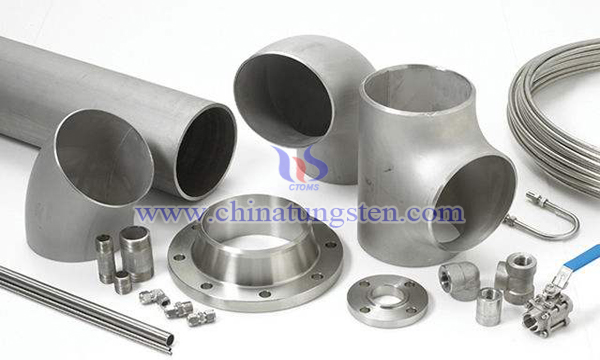Nickel-Tungsten Intermediate Alloy
- Details
- Category: Tungsten Information
- Published on Friday, 31 May 2019 10:17
Superalloy is a kind of alloy based on iron, nickel and cobalt, serving in high temperature environment, withstanding severe mechanical stress and having good surface stability. It is not only the key material for high temperature components of Aeronautical and aerospace engines, but also the indispensable important material for naval ships, energy, petrochemical and other industrial fields.
In the whole field of superalloys, nickel-based superalloys occupy a special important position. Compared with iron-based and cobalt-based superalloys, nickel-based superalloys have higher high temperature strength and structural stability, and are widely used to manufacture hot-end components of aero-jet engines and industrial gas turbines. Nickel-based superalloys are based on nickel (generally more than 50%) and have high strength, good oxidation resistance and gas corrosion resistance in the range of 650-1000 ℃.

The melting point and density of nickel are 1455 ℃ and 8.9g/cm3, while that of tungsten is 3415 ℃ and 19.3g/cm3. In the melting process of nickel-based superalloy, if tungsten element is added directly in the form of pure metal, the composition segregation will be more serious due to the large difference of melting point and density between them. When the size of alloy ingot is larger, the composition segregation will be more serious.
In order to avoid segregation, Chinese scholars have designed a nickel-tungsten intermediate alloy, which is prepared by vacuum induction smelting with nickel and tungsten as raw materials. Its operation steps include:
1.35 kg nickel metal and 25 kg tungsten metal with purity over 99.95% were dried at 120 ℃ for 4 hours.
2.Then the alloy proportion is calculated according to the prescribed composition, and the feeding is carried out: the raw materials are fully contacted to ensure that the medium frequency vacuum induction furnace can be heated and melted, and finally the furnace is loaded.
3.Melting: Vacuum extraction, power transmission melting. After the alloy is melted, the power is properly increased and refined for 4 minutes at 1598 ℃. During the melting process, it can be observed that the alloy becomes dark red and melts slowly, and the alloy liquid shines, becomes clear and pours.
4.After 95 minutes of cooling, the tungsten-nickel master alloy was obtained.
By designing alloy composition, the melting point of nickel-tungsten intermediate alloy is close to that of nickel, and the composition segregation of nickel-tungsten intermediate alloy is small. When using tungsten instead of metal in nickel-based alloy smelting, the melting temperature can be reduced and the composition segregation can be prevented. The experimental results show that the melting point of nickel-tungsten intermediate alloy is 1495-1525 ℃, and the composition segregation is small.
- Tungsten Alloy Manufacturer & Supplier, Chinatungsten Online: www.tungsten-alloy.com
- Tungsten News & Prices of China Tungsten Industry Association: www.ctia.com.cn
- Molybdenum News & Price: news.molybdenum.com.cn
- Tel.: 86 592 5129696; Fax: 86 592 5129797; Email: sales@chinatungsten.com



 sales@chinatungsten.com
sales@chinatungsten.com